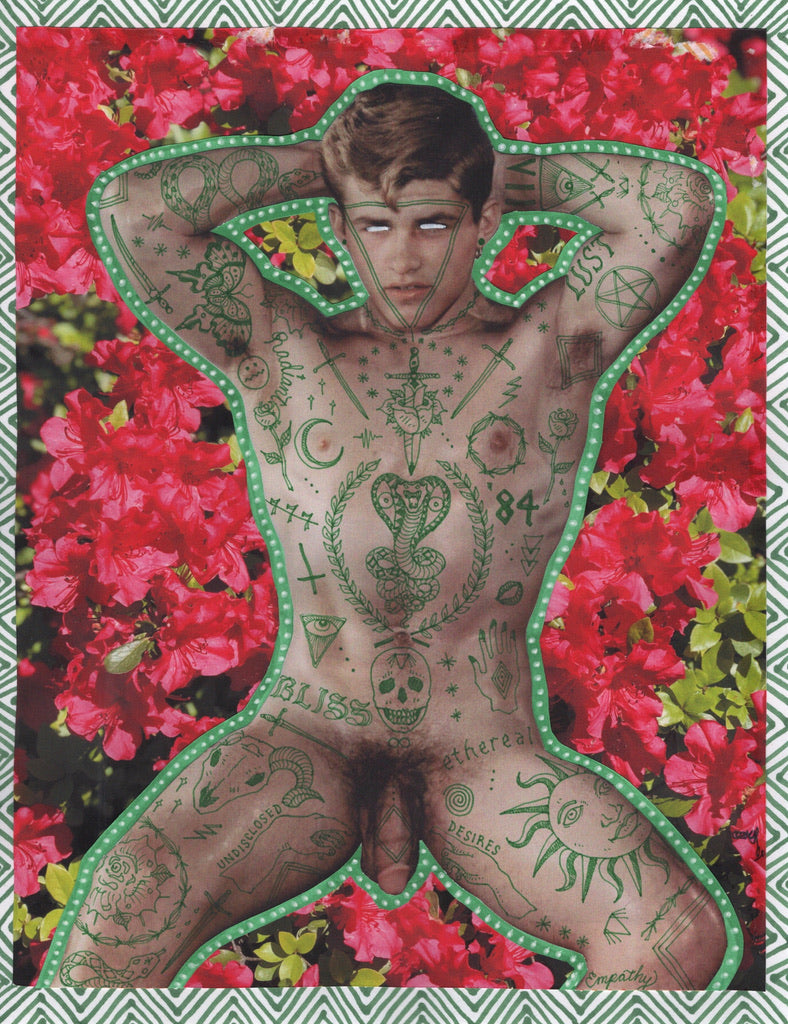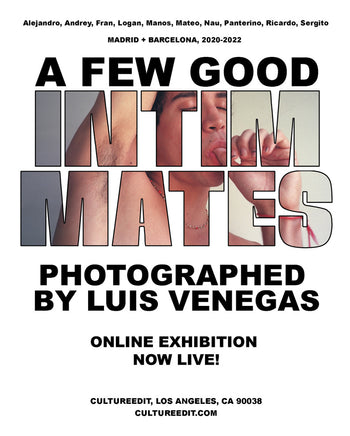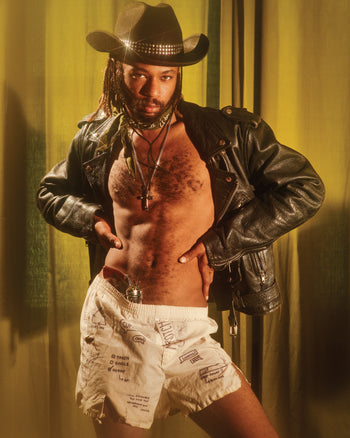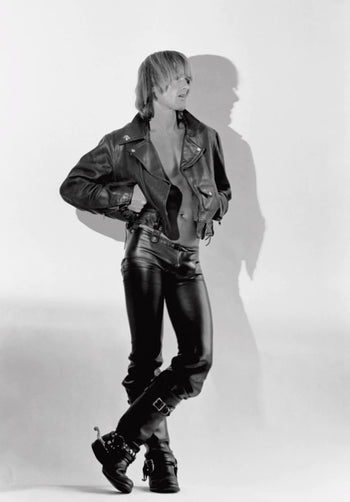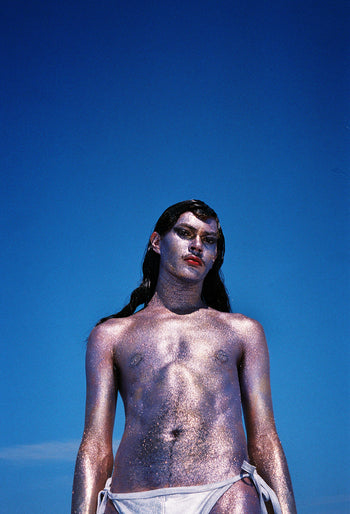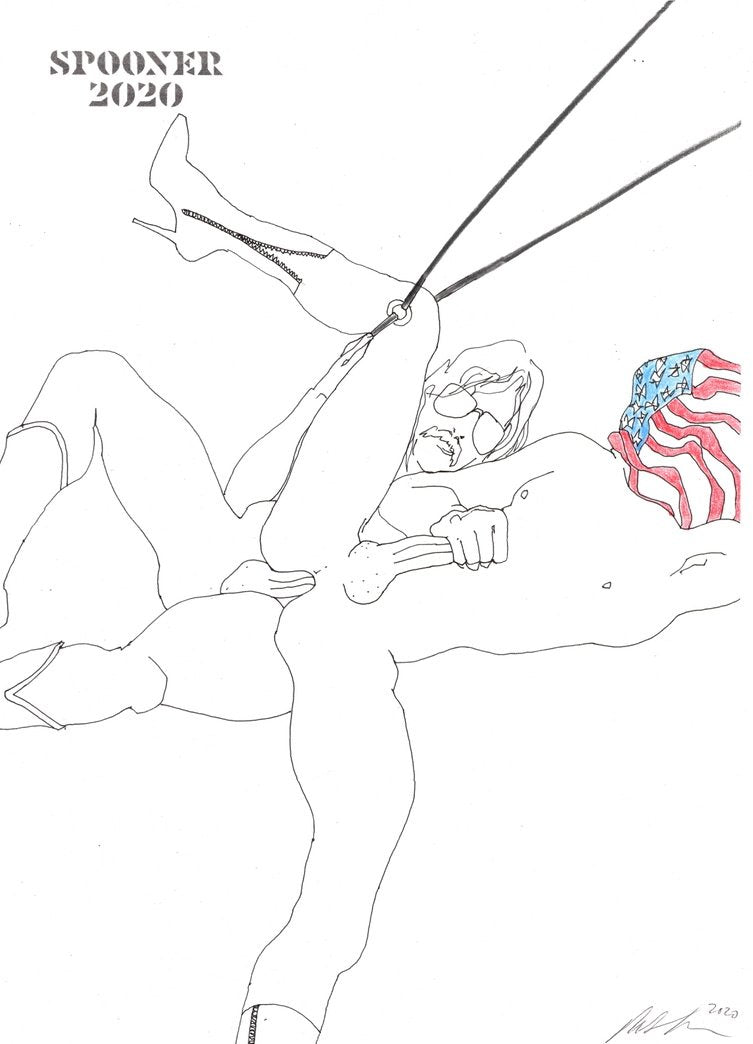Zach Grear is a collage artist who uses found materials in order to create new images, and thus, new meaning. Using anything from smut magazines, to famous portraits of queer icons, Zach will draw over just about anything. His line drawing emulates vintage tattoo art, which perfectly partners with a whole assortment of images from decades past. The work is an exploration of alternative beauty — anything rooted in individuality — and brings a fresh vision to queer nostalgia. Having collected smut magazines as a youth, Zach has now found a way to work vintage pornography into his collection, making him the perfect artist to feature on CULTUREEDIT / Tom of Finland Store. Tom of Finland has always been a muse of his, and even inspired his own style early on. You can check out his latest online exhibition LUST 1984, which is oh so delightful! It calls forth a bygone era, and yet feels totally current. Get lost in his world of tattooed beauty, and pick up an original work if you fancy. You can read a bit more about the Brooklyn artist below.
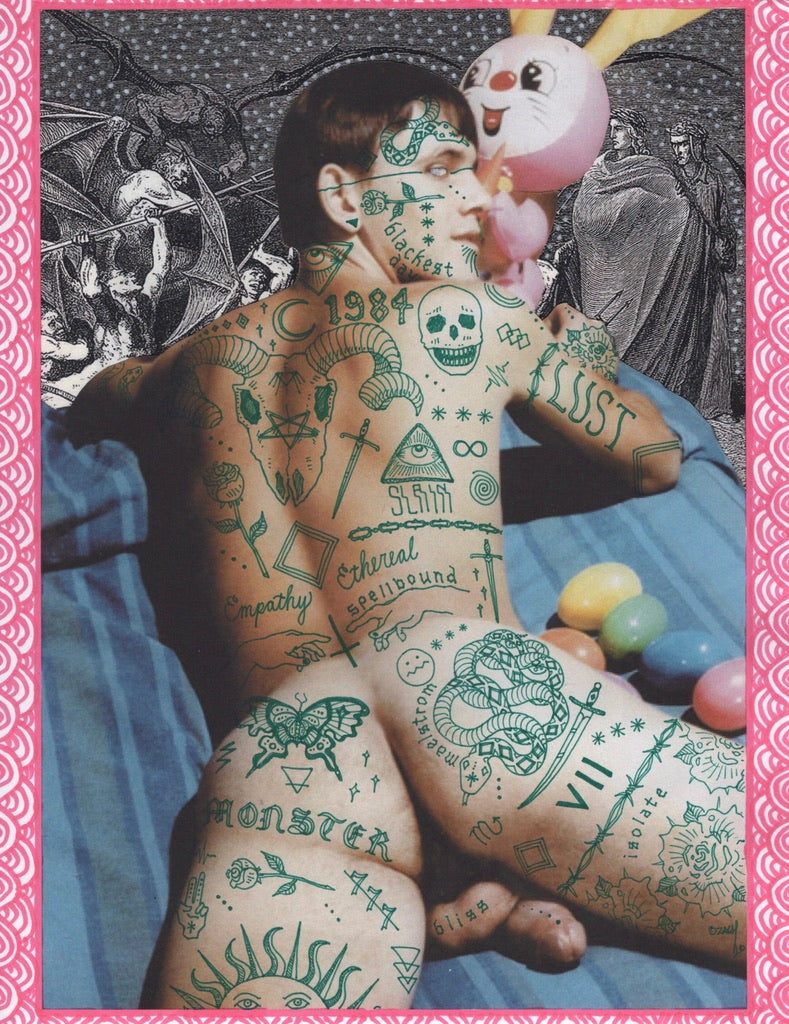
When did you start drawing over found images?
I began this particular style almost three years ago. I've always drawn, since I was a kid, and I started adding tattoos in my drawings as I myself started getting more body art.
Have you always been a tattoo fanatic? What do tattoos mean to you?
No actually. When I was younger I was into piercings, and I never gave much thought to tattoos until my late twenties. And tattoos for me are a way of reclaiming my body. Choosing designs and positions, and even the pain, all force me to connect with my body; and the more covered I get, the more I see a beauty standard that is all my own.
How did you come up with such a distinctive line drawing style?
It's all just innate. I think with most artists, we begin by trying to imitate something that inspired us. The more we do this, the more our own style breaks through, and at some point (hopefully) we embrace that style. The past few years have been that moment for me, of embracing my own style.
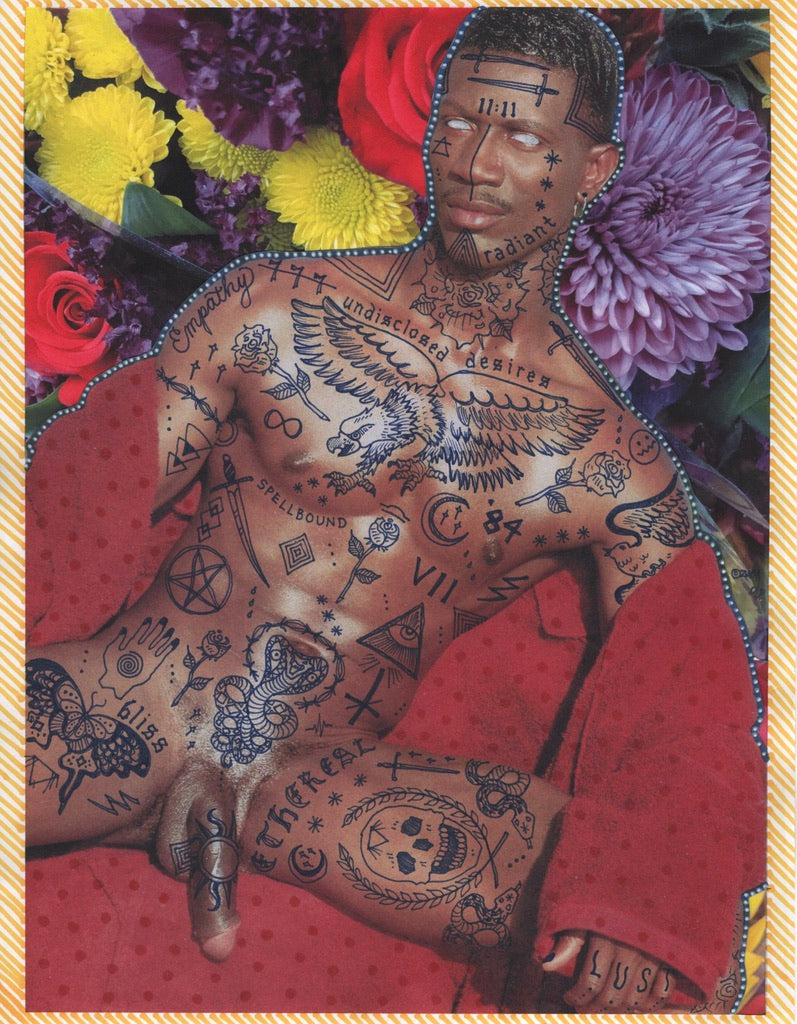
Why do you think you gravitate toward vintage imagery?
Vintage erotica carries so much more ingenuity. The further a culture is pushed underground, the more creative they have to get. That these magazines are committed to making a fantasy within low budgets and censorship, with varying results, makes it more fun to add my own creativity to them.
Which era inspires you the most?
That's a good question. As I really began focusing on my art, I could not escape the 1970s, especially ‘70s New York. I think that's now evolved to most of the late 20th century analog age— ‘50s through ‘90s. I love reading memoirs about artists throughout that wide swath of time— from Baldwin to Wojnarowicz to Kim Gordon— specifically how the era of New York they moved through informed their craft.
Saaaaame. Tell me about the icons you feature. What do these figures mean to you? And what is it like to embellish them?
The icons I decide to make portraits of all inspire me in some way. Some are well known and some are more local. I want to share a part of myself when I draw them, kind of like an invitation, while also highlighting features specific to them.

Many of the artists you feature were artists who collaged images themselves, what is the dialogue you are engaging with these legends?
Any artist that I choose to feature is my way of celebrating them. I enjoy incorporating facts about them, like year of birth or my favorite quote, into their portrait; I think the dialogue comes when I combine these elements with my own symbols. It's a juggling act of channeling visual cues of their identity through my artistic lens.
You often remove the eyes of the featured figures, what is the reason for this?
For a long time I wasn't really sure. I do know that it takes the figure into a less comfortable place visually, and that I like having control of that.
When did using vintage pornography as source material become part of your practice?
I used to shoplift old smut mags when I was a teenager, so there will always be a thrill associated with magazines like Honcho and Mandate. I found myself casually collecting old magazines for a while, knowing that I wanted to use them creatively. Once I began drawing on the images and collaging them, I realized I'd found a way to engage with that original thrill. And now I'm hooked.
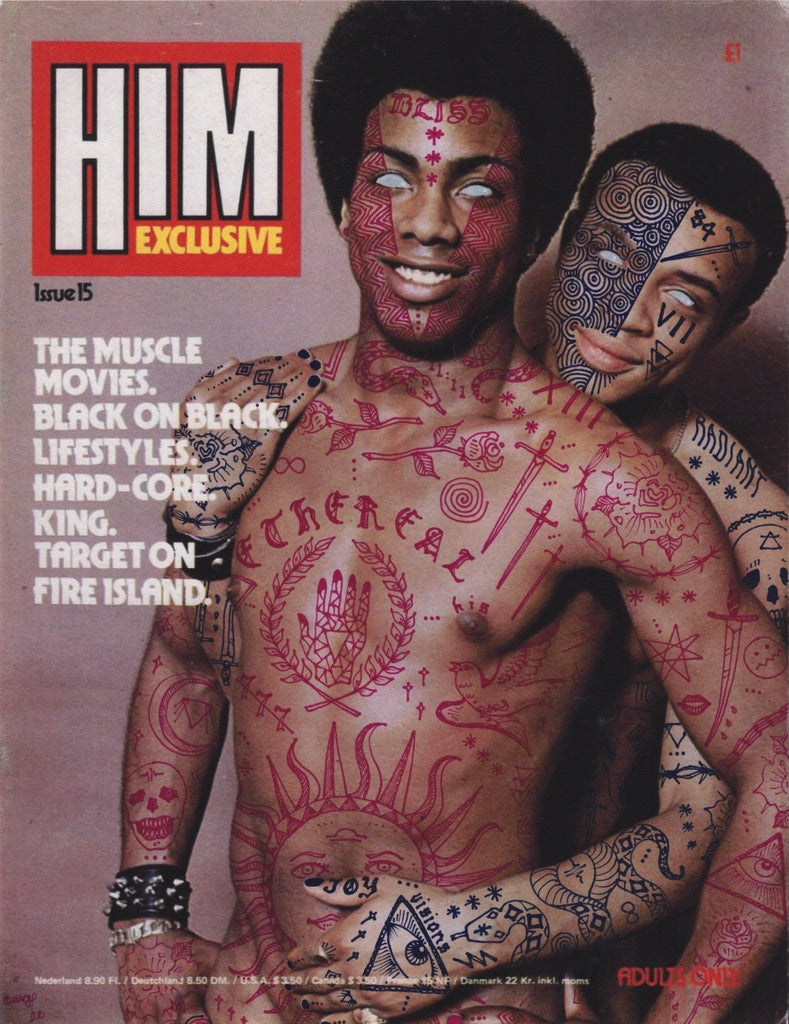
I find there’s something about the drawn tattoos that desexualizes the pornographic images. Perhaps because it makes art out of them? Do you have thoughts on this?
I'm always curious about how the reaction to pornographic images (excitement? lust? disgust?) meets with the reaction to the artwork I add to it. That it desexualizes the image for you I find fascinating. This also raises more questions: does an image have to be desexualized in order for it to be considered art? Especially if that image isn't made by and for the hetero male gaze?
Was your exhibition LUST 1984 created in collaboration with CULTUREEEDIT, or were these pieces already in your body of work?
Both! About half of the artwork I'd made in the last three or four months, and the remaining were inspired by this opportunity.
What is your relation to Tom of Finland? How did his art become part of your collection?
I found a Tom of Finland book at the public library when I was in High School. I'd look through it ravenously but wasn't brave enough to actually check it out of the Library. His work is so instantly recognizable that I found myself returning to it often. When I started drawing my own erotically themed work, it would be Tom's work that formed the blueprint in my mind. In 2020, there are a lot of areas in Tom of Finland's work that haven't evolved— hyper masculinity, body exclusivity, fetishism of black and brown men. As a black queer artist I want to take the inspiration I've gotten from his work and push the vision further. My "TxM of Brooklyn'' series is an extension of that.
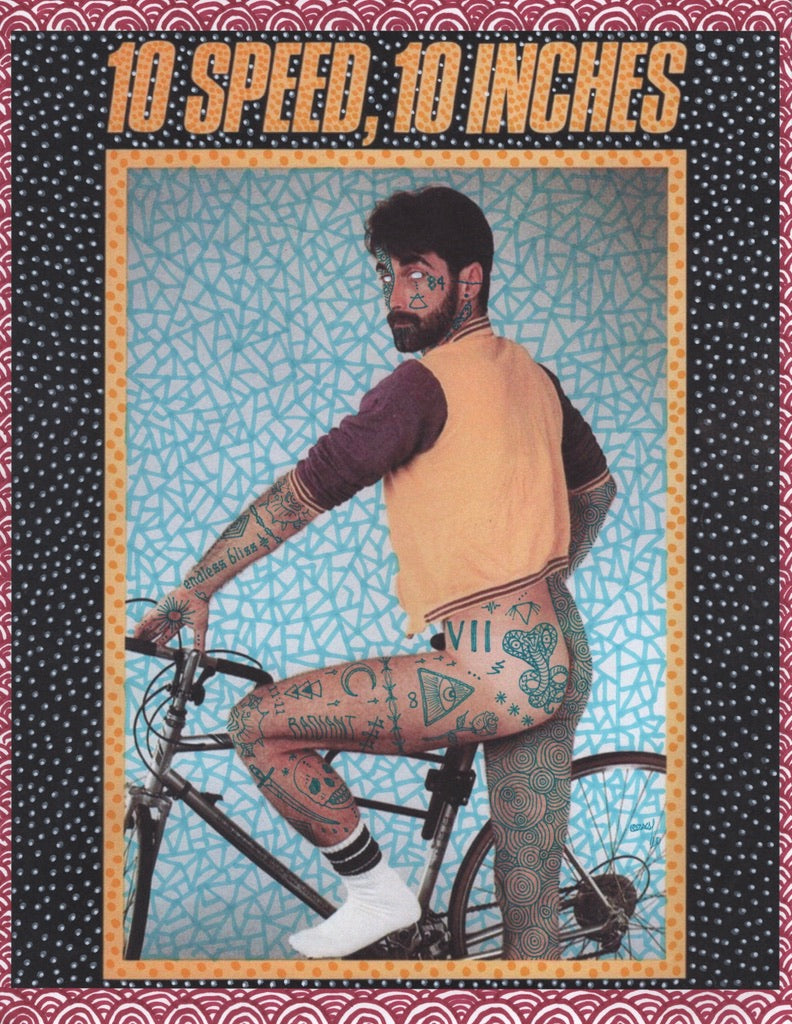
There’s lots of messaging hidden amidst your work, what are the main themes we can look for?
Classic tattoo imagery like roses and daggers I can't get enough of. A lot of the words I feel leave some room for the viewer to fill. For example, "lust" will invoke a reaction on every single person who reads it. I find it one of the most perfectly loaded words. I've mentioned it before but many of the phrases are lyrics to songs I'm listening to while drawing that particular piece.
What is beauty to you?
Beauty above all is individualism. It's the moment someone decides "I'm going to do this my way".
If applicable, how has your hometown San Francisco, and your current town New York City influenced your work?
I don't have much of a connection with San Francisco anymore, but I will say I had my first experience of a queer community there. It's a small city so the concept of knowing who everyone is, even if you've never technically met them, is very real there. New York influences my work in a much bigger way. Participating in events like Bushwig with other queer artists makes me feel like the city truly plays a role in my art.
You’ve been featured in numerous publications and exhibitions, what can we look forward to after LUST 1984?
I've been trying to photograph more. Using found imagery is great and fun to explore; however I'd very much like to own the process from beginning to end.
